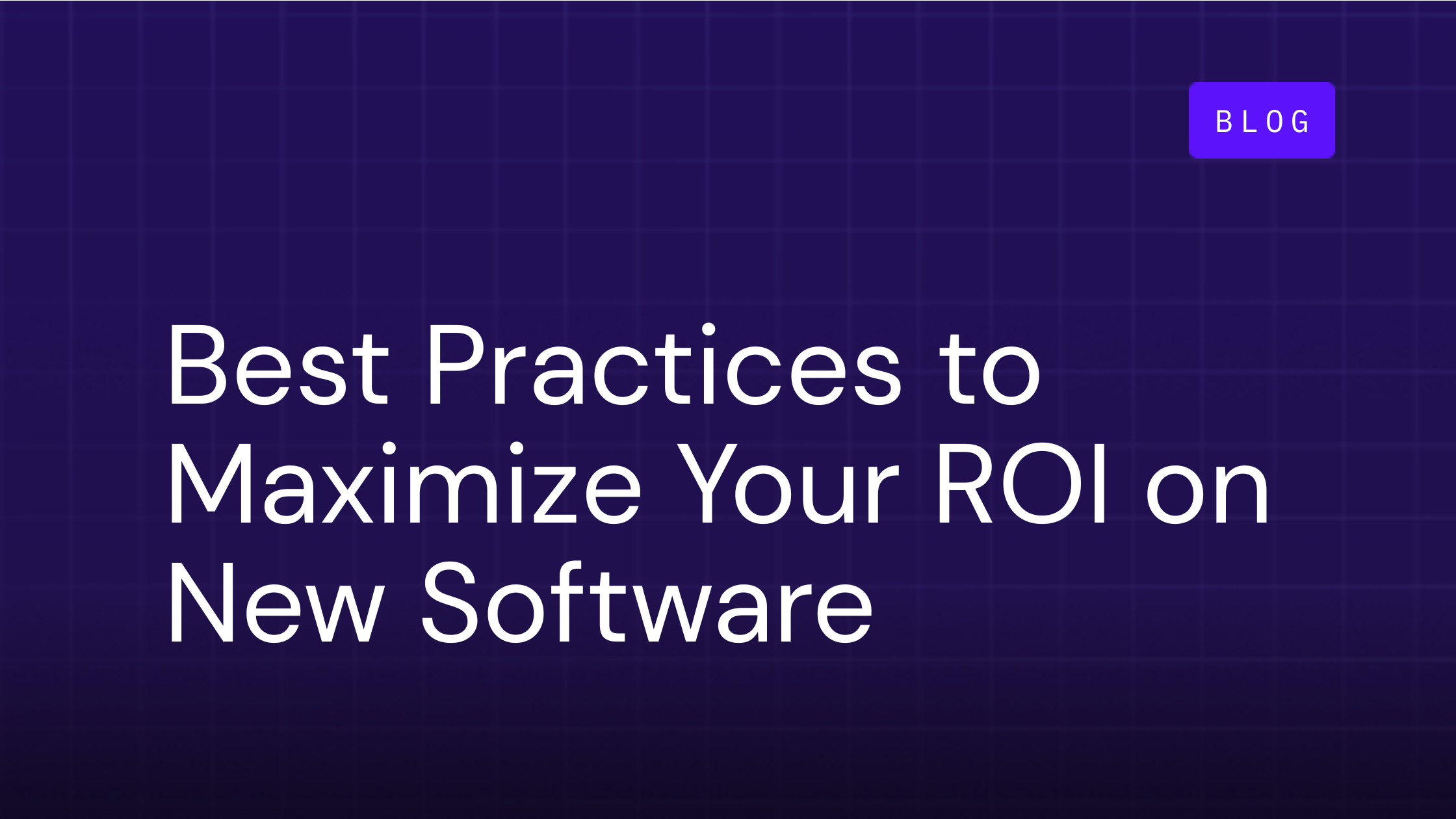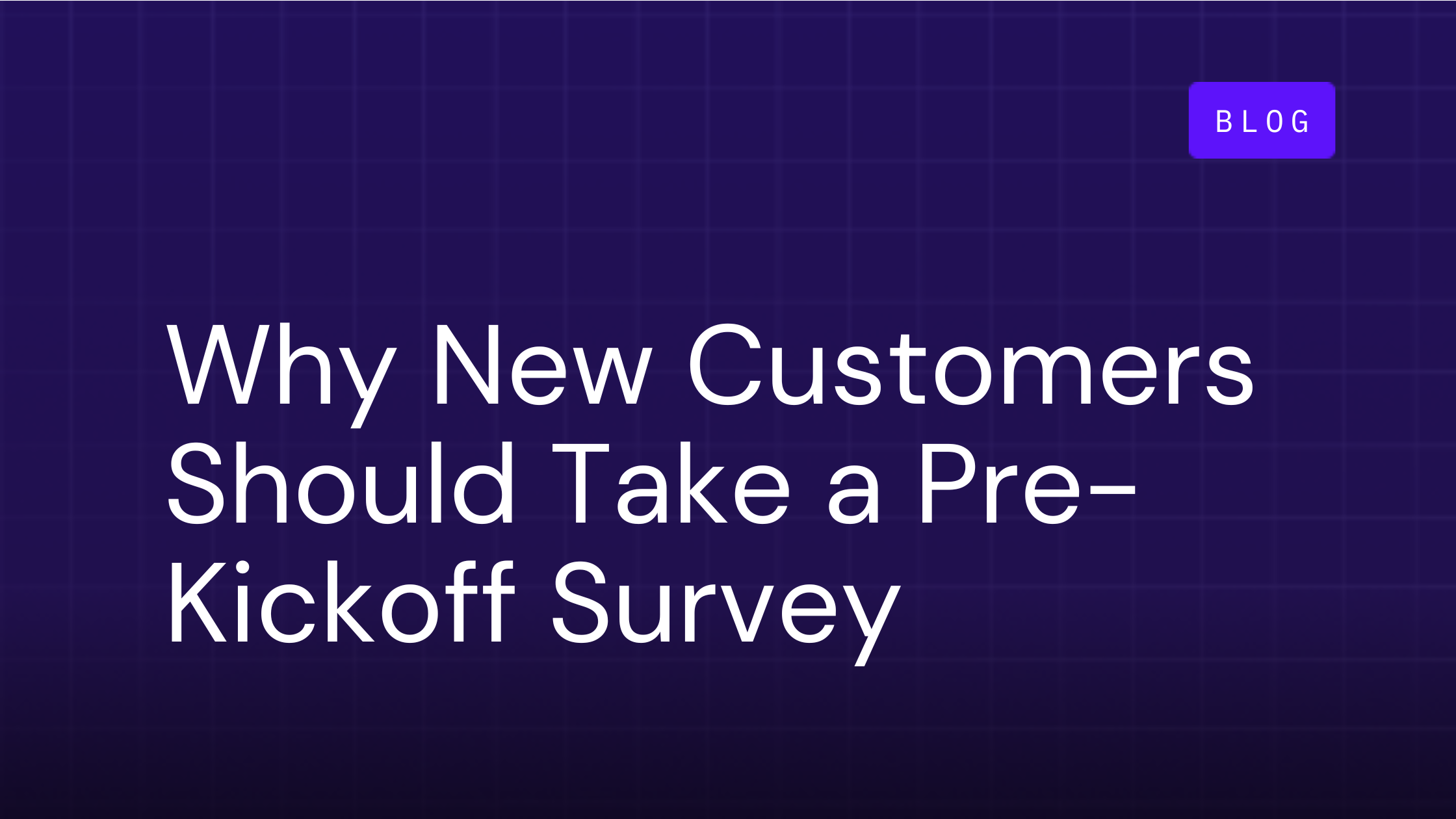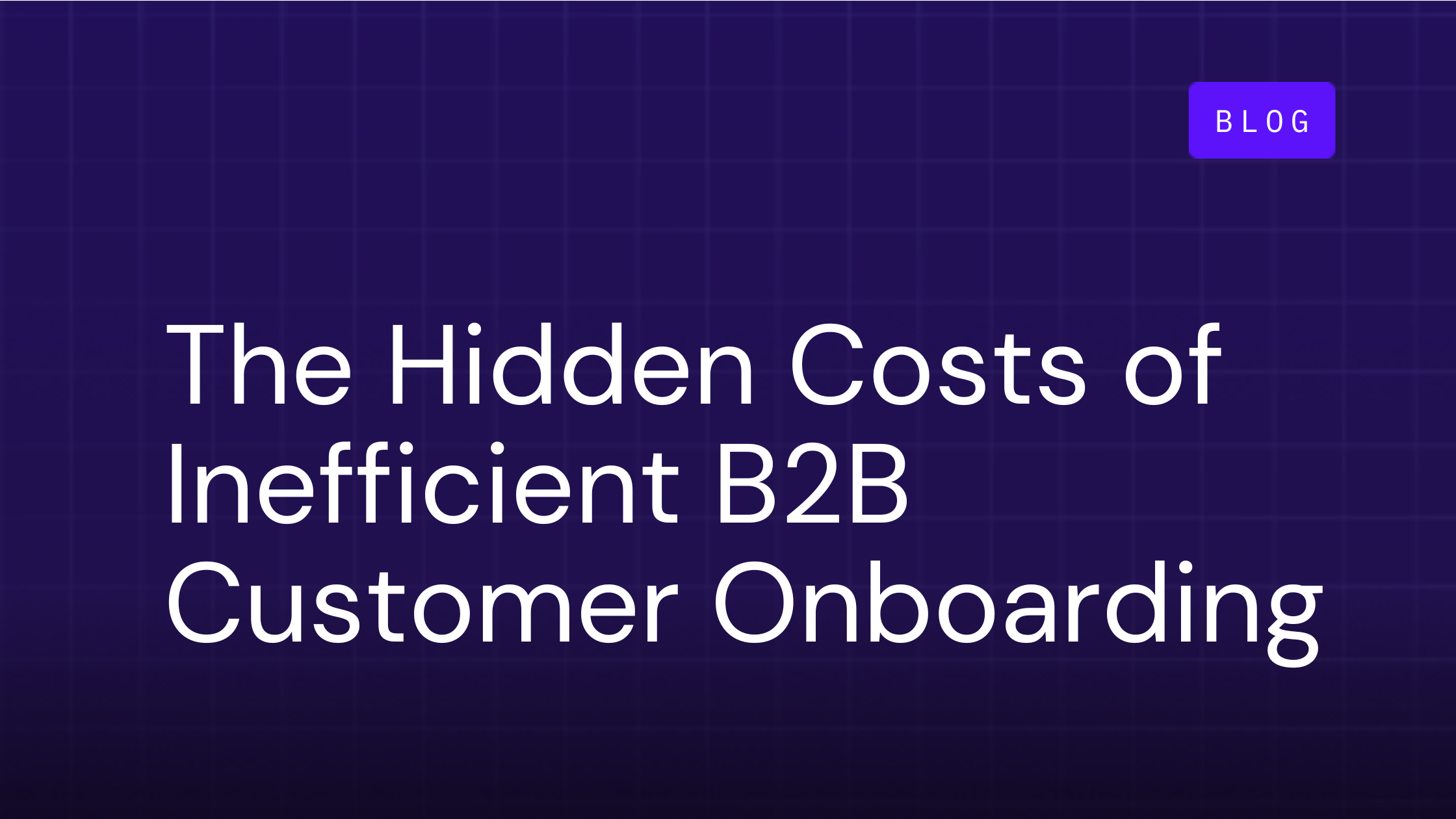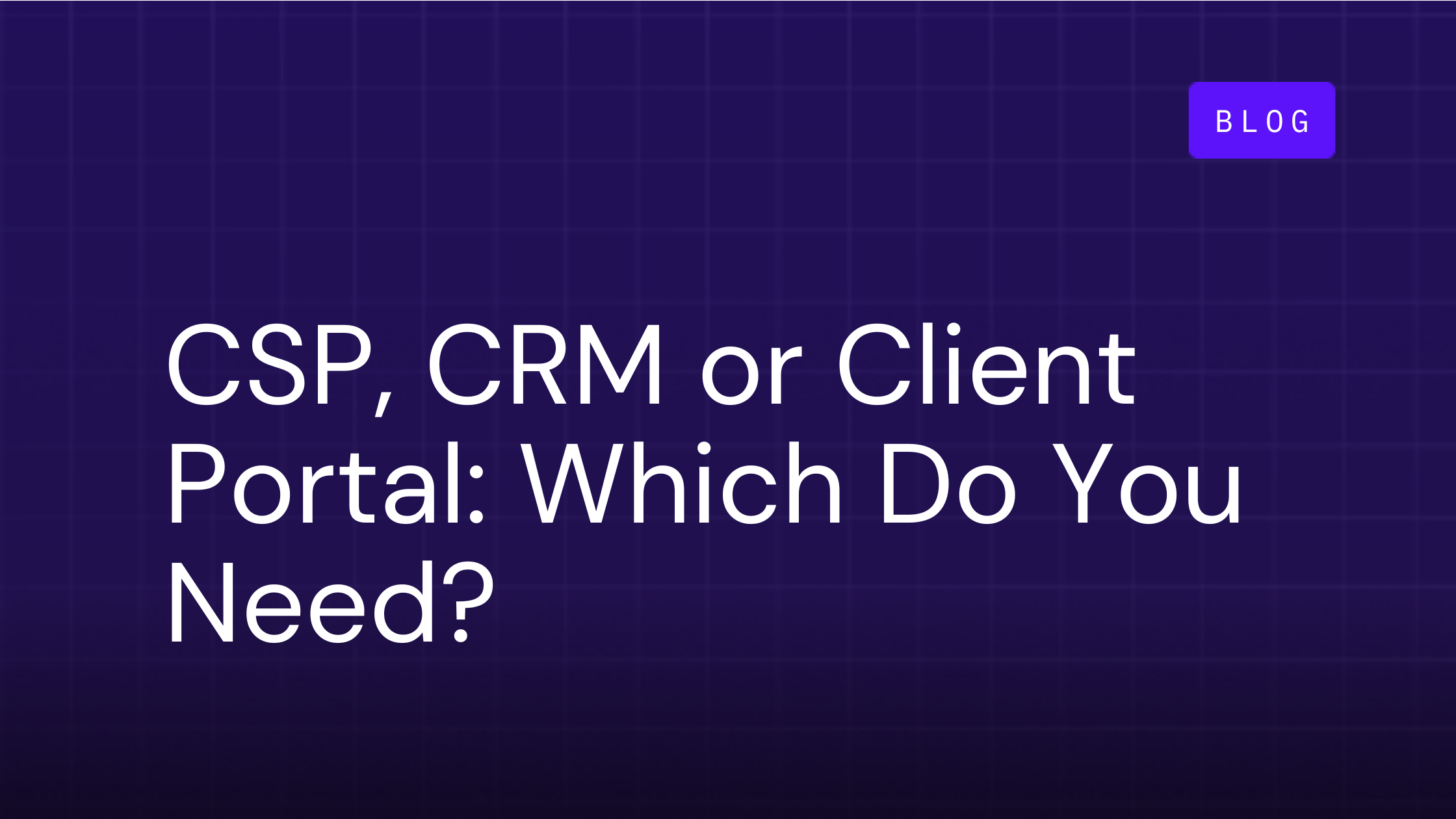SaaS Implementation: Best Practices to Maximize Your ROI on New Software
Published: May 13, 2024

Table of Contents
SaaS tools can make your entire company more efficient and profitable, but only if your team actually uses them. That’s not always guaranteed, as your team is likely more comfortable with your existing processes and may be resistant to change.
The solution lies in your SaaS implementation process. If you do a good job introducing your team to your next new tool, they’ll be much likelier to use it on a daily basis. But how do you do that?
In this article, we explore best practices for software as a service implementations. Learn how to ensure a smooth and successful rollout of your new software.
We'll cover essential SaaS implementation steps such as creating a roadmap and setting goal outcomes, choosing a team member to champion the implementation, onboarding team members, and tracking product usage to make necessary adjustments.
By following these implementation best practices, you can maximize the return on SaaS investment and achieve long-term success with your SaaS tools.
What is SaaS Implementation?
SaaS implementation is the process of introducing your team to a new software technology. It generally involves four steps:
- Creating a roadmap and setting goal outcomes for the implementation process
- Choosing a champion to oversee the implementation
- Onboarding team members to the new software
- Tracking product usage and adapting as needed
Following a step-by-step process like this will help your company get maximum value out of the new software as a service tool as quickly as possible. It can streamline workflows, reduce your costs, and help with productivity.
To understand why SaaS implementation matters, imagine if you took a different approach instead. You purchase a new software product and tell your team to learn how to use it themselves. It would undoubtedly take longer for them to get up to speed and many employees would grow frustrated. This could make them resistant to using the tool in the future, which means the company wouldn’t get as much value from it.
Steps for Successful SaaS Implementation Project Plan
1. Creating a Roadmap and Setting Goal Outcomes
Creating a roadmap for your SaaS implementation sets the foundation for a successful rollout. This roadmap should outline key milestones, timelines, and responsibilities. Here’s how to get started:
- Define Objectives: Clearly articulate what you aim to achieve with the new software. Are you looking to improve efficiency, reduce costs, or enhance customer satisfaction? Set specific, measurable goals.
- Identify Key Stakeholders: Determine who will be affected by the new software and involve them in the planning process. This could include team leads, IT personnel, and end-users.
- Develop a Shared Timeline: Break down the implementation process into phases and set realistic deadlines for each phase. This ensures everyone is on the same page and sets your SaaS implementation project up for success and timely completion.
- Allocate Resources: Ensure you have the necessary resources, including budget, personnel, and time, allocated for each phase of the implementation.
- Conduct a Needs Assessment: Before creating your roadmap, perform a thorough needs assessment to understand the current pain points and requirements. This could involve surveys, interviews, and reviewing existing workflows.
- Regular Check-ins: Schedule regular meetings to review progress, address any issues, and adjust timelines as needed. Weekly or bi-weekly check-ins can help keep your SaaS implementation project plan on track and ensure that any obstacles are promptly addressed.
2. Choosing a Team Member to Champion the Implementation
Selecting a dedicated project manager or implementation lead is crucial for the successful adoption of your SaaS tool. This person will be responsible for coordinating the efforts of various teams and ensuring the project stays on track.
- Select the Right Person: Choose someone with strong project management skills, a good understanding of the software, and the ability to communicate effectively with different teams. For instance, if you’re implementing HR software, select someone with both HR and project management expertise.
- Provide Training: Ensure the implementation lead receives comprehensive training on the new software to become the go-to expert. This training should cover all functionalities of the software and potential troubleshooting scenarios.
- Empower with Authority: Give the project manager the authority to make decisions, allocate resources, and resolve conflicts that may arise during the implementation process. This might mean allowing them to bypass certain approval processes to keep the project on schedule.
3. Onboarding Team Members to the New Software
Effective onboarding is essential to ensure your team can use the new software efficiently and confidently. A structured onboarding process can significantly reduce the learning curve and improve user adoption rates.
- Create Comprehensive Training Materials: Develop user manuals, video tutorials, and FAQs to help team members understand how to use the software. These materials should be easily accessible and cover common tasks and troubleshooting steps.
- Conduct Hands-On Training Sessions: Organize workshops and training sessions where employees can practice using the software in a controlled environment. Interactive training sessions are often more effective than passive learning.
- Assign Mentors: Pair less experienced users with mentors who can provide one-on-one support and guidance during the initial stages of the implementation. This can help build confidence and ensure that questions are quickly addressed.
4. Tracking Product Usage and Adapting as Needed
Once the software is in use, it’s important to continuously monitor its performance and make adjustments as necessary. This helps ensure that the tool remains effective and continues to meet your company’s needs.
- Use Analytics Tools: Implement analytics tools to track usage patterns, identify bottlenecks, and measure the impact of the software on productivity. For example, track which features are most and least used to understand user behavior.
- Gather Feedback: Regularly solicit feedback from users to understand their experiences and identify areas for improvement. This can be done through surveys, feedback forms, or direct interviews.
- Adapt and Optimize: Based on the data and feedback collected, make necessary adjustments to workflows, provide additional training, or customize the software to better fit your team’s needs. For instance, if users are consistently struggling with a particular feature, consider providing additional training or simplifying the process.
5. Track Everything
You can only improve something if you track it. For SaaS implementation, that often means analyzing how long employees take to complete each onboarding step and when they reach out for support.
- Utilize Tracking Software: Implement software that tracks employee progress through the onboarding process. This can provide insights into where employees are getting stuck and how long it takes to complete each step.
- Monitor Support Requests: Keep a log of support requests to identify common issues and areas where additional training might be needed. This data can help in refining the onboarding process.
- Review Progress Regularly: Set up regular reviews to assess the data collected and identify trends. For example, if a particular onboarding step consistently takes longer than expected, investigate and address the root cause.
6. Focus on Customization
Everyone learns in their own way. Your onboarding procedures should reflect that with customizable paths that support employees who learn at different paces.
- Develop Multiple Training Modules: Create different training modules tailored to various learning styles and paces. For example, offer video tutorials, written guides, and interactive simulations.
- Allow Self-Paced Learning: Provide options for employees to learn at their own pace. Some may prefer to complete the training quickly, while others might need more time to understand the material thoroughly.
- Personalize Training Content: Customize training content to be relevant to different roles within the organization. For instance, customer success teams might need different training materials than customer service or support teams.
7. Leverage Onboarding Platforms
Onboarding platforms make it significantly easier to track SaaS implementation across your organization. They also include helpful customization features so you can adjust your process to meet the diverse needs of different employees.
- Choose the Right Platform: Select an onboarding platform that offers the features you need, such as progress tracking, customizable training paths, and analytics.
- Integrate with Existing Systems: Ensure the onboarding platform integrates seamlessly with your existing systems. This can streamline the process and provide a more cohesive experience for employees.
- Regularly Update Content: Keep the training content on the onboarding platform up to date with the latest features and best practices. This ensures that employees always have access to relevant and accurate information.
8. Look for Upsell Opportunities
If you sell SaaS products and want to standardize how they’re implemented, make sure you look for a few upsell opportunities. For example, you might include an offer for 24/7 support in a part of the onboarding process that customers traditionally struggle to complete. This can help you capitalize SaaS implementation project costs to become more profitable.
- Identify Pain Points: Analyze customer feedback and support requests to identify common pain points during the onboarding process. These areas can present opportunities for upselling additional services or features.
- Offer Premium Support Packages: Introduce premium support packages that provide additional assistance during the onboarding process, such as dedicated account managers or 24/7 support.
- Promote Add-Ons During Training: Highlight add-on features or services during the onboarding process that can enhance the customer’s experience and usage of the software. For example, if your SaaS product includes advanced analytics, offer training sessions or additional resources to showcase their value.
By following these best practices, your SaaS implementation process will be more structured, efficient, and successful. This ensures that your company can fully leverage the benefits of the new software, leading to improved productivity, cost savings, and overall satisfaction.
Three Types of SaaS Implementation
As you begin thinking about how to implement your new SaaS product, there are three primary strategies to consider. The best option for your company can depend on its size and the complexity of the software it’s trying to implement.
1. Self-Guided
If you have a small company or a simple SaaS product, you may be able to handle implementation entirely on your own. Self-serve onboarding and implementation may be the most cost-effective option, but it doesn’t always work. A self-guided implementation can backfire. For example, you might try to implement new software on your own only to frustrate your team and dissuade them from using the product. Even if you hire a team for support after this happens, the damage may already be done.
2. Enterprise
Enterprise-grade SaaS implementation is usually built around the unique needs of the company. These businesses have large, complicated tech stacks. Adding a new tool can be a very complicated process. Enterprise implementation strategies usually include things like:
- Training for leaders
- Customized integrations with existing tools and databases
- Specialized employee accounts
- Ongoing training and support for employees
This is the most expensive option because it’s so customized. But it’s only something you’ll need if you work in a very large company.
3. Hybrid
Hybrid SaaS implementation will be the right strategy for most businesses. It combines elements of self-guided and enterprise SaaS implementations. For example, the company you buy the product from may have a self-paced guide you can follow with help videos and support from real people when you need it. You might also use a platform with customizable workflows and task libraries like OnRamp. Our platform is highly customizable and generates deep insights into the onboarding process as customer success teams complete it in real time. This can help you make smart adjustments when necessary to get the results you want.
Overview a Typical SaaS Implementation Project Plan Process
Implementing a SaaS solution can be a complex yet rewarding process for any organization. To ensure success, it's crucial to follow a structured approach. This article outlines the key steps involved in a SaaS implementation checklist, from initial planning to ongoing management.
We'll begin with pre-implementation planning, where you identify business needs and engage stakeholders. Next, we'll cover how to create an implementation roadmap with clear objectives and timelines. The actual implementation process involves setting up and configuring the solution, integrating it with existing systems, and migrating data securely.
Following this, we'll discuss the importance of comprehensive user training and strategies to encourage SaaS adoption. Finally, we'll look at post-implementation management, focusing on continuous improvement, maintaining security and compliance, and measuring success through key performance indicators (KPIs).
By following these steps, you can ensure a smooth and effective SaaS implementation, setting your organization up for long-term success.
Aligning with Strategic Business Objectives
Successful SaaS implementation starts with aligning the project with your strategic business objectives. This alignment ensures that the new software supports and enhances your overall goals, driving growth and efficiency. By clearly understanding how the SaaS tool will contribute to your business's broader mission, you can make more informed decisions throughout the implementation process.
Pre-Implementation Planning
Identifying business needs and setting SMART goals are crucial first steps in SaaS implementation. SMART goals—Specific, Measurable, Achievable, Relevant, and Time-bound—provide a clear framework to measure success.
- Specific: A specific goal is one that you can define precisely. For example, you don’t just want to implement the new tool. You want to implement the software in a way that improves lead conversion rates or customer support outcomes.
- Measurable: Your goals should come with concrete, measurable objectives. That could mean converting 30% more leads or improving customer support scores by 10%.
- Achievable: Next, make sure the goals you set are achievable. They can be ambitious. But if they’re not realistic, they may cause frustration, angst, and SaaS implementation failure.
- Relevant: Also, be sure that the goals you choose align with your broader company-wide objectives. For example, if your CEO wants to convert 20% more leads from your website, your implementation goals should reflect that.
- Time-Bound: Finally, set a specific time period in which you hope to achieve the goals you establish. That could mean getting your full sales team to start using the new software daily by the end of the quarter or improving lead conversion rates by a set percentage within the next 12 months.
Engaging key stakeholders early in the process is essential. Their involvement ensures that everyone affected by the new software is on board and understands their roles and responsibilities, including IT teams, department heads, and project managers. When researching and selecting the right SaaS solution, evaluate different vendors carefully. Consider how well each option integrates with your existing systems to ensure a smooth transition.
Creating an SaaS Implementation Project Roadmap
Defining the implementation project plan scope with clear objectives, timelines, and deliverables sets the stage for a successful SaaS implementation project plan. Assign an implementation manager to oversee the process and ensure accountability. Designing a detailed rollout plan involves adopting a phased implementation approach, prioritizing core features before introducing advanced functionalities. This strategy helps manage the complexity and ensures that the essential aspects of the software are fully operational before expanding its use.
SaaS Implementation Process
The setup and configuration phase involves initial setup procedures and customizing the SaaS solution to meet your specific business needs. Ensuring seamless integration with your current tech stack is vital to address any potential compatibility issues. Secure and accurate data migration is another critical step, ensuring data integrity and compliance with relevant regulations.
Training and SaaS Adoption
Developing comprehensive user training programs is essential to help your team adapt to the new software. Utilize various training methods, such as in-person sessions, online tutorials, and knowledge bases, to accommodate different learning preferences. Encouraging SaaS user adoption through strategies that increase engagement and proficiency is key. Monitoring and tracking software usage can help identify areas where additional support might be needed.
Post-Implementation Management
Continuous improvement and optimization should be a focus post-implementation. Regular performance reviews and updates, along with gathering user feedback, help make necessary adjustments to enhance the software's effectiveness. Implementing robust security measures ensures ongoing compliance with industry standards and regulations. Finally, measuring success by defining and tracking key performance indicators (KPIs) allows you to analyze the software's impact on business processes and outcomes.
By following these best practices, your SaaS implementation process will be more structured, efficient, and successful, ensuring that your company can fully leverage the benefits of the new software. This leads to improved productivity, cost savings, and overall satisfaction, aligning with your strategic business objectives.
The Bottom Line
SaaS products are often very expensive. You want to make sure you get the best return possible on these investments. The way to do that is by creating a better SaaS implementation strategy. Customer relationship management (CRM) is a prime example of a SaaS solution that can deliver significant value when properly implemented. The importance of SaaS adoption cannot be overstated, ensuring that SaaS solutions are fully integrated and utilized within the company.
A detailed SaaS implementation plan is essential to guide the successful rollout of SaaS solutions, highlighting the role of the SaaS provider in supporting the implementation process through scalable solutions and robust support.
SaaS solutions offer businesses benefits including flexibility and cost-effectiveness. Managing relationships with a SaaS vendor is crucial to ensure high business value from SaaS adoption. Finally, a comprehensive software implementation plan is a critical component of a successful SaaS implementation strategy.
OnRamp makes that much easier to do. Our all-encompassing platform guides customers through each step of the implementation process with customizable playbooks to meet their diverse needs.
You also get detailed analytics and data tracking so you can refine your process quickly as often as it takes to reach your goals. Get in touch for a demo to learn more about how we can help.
Related Posts:

Why New Customers Should Take a Pre-Kickoff Survey
But just diving into the implementation headfirst can hurt a lot more than it helps.

The Hidden Costs of Inefficient B2B Customer Onboarding
B2B software is only getting more powerful and, therefore, complicated. That’s why the average onboarding time for a new corporate...

Customer Success Platform, CRM or Client Portal: Which Do You Need?
With so many business enablement tools today, it can be tough to decide which are worth the investment. You want to have the best...